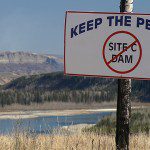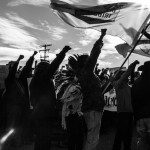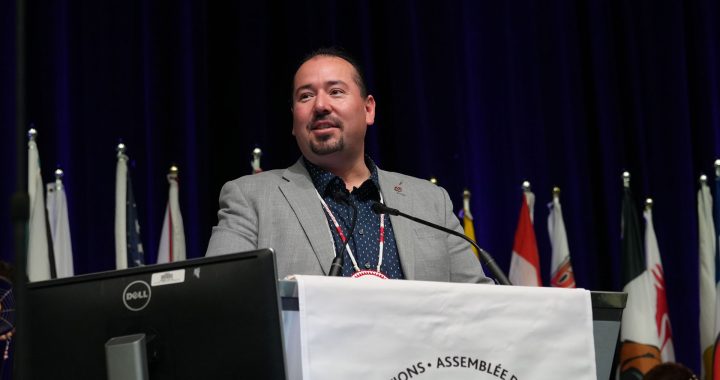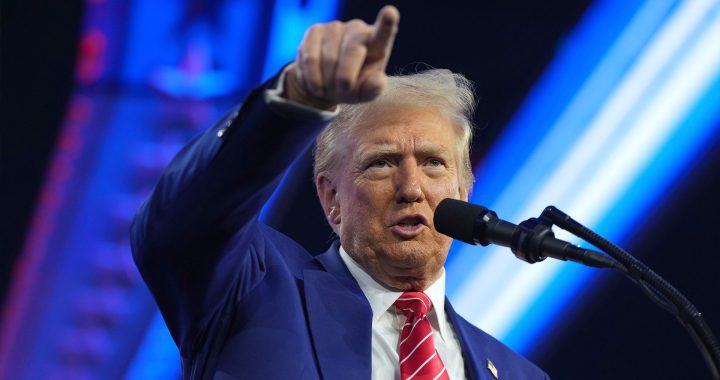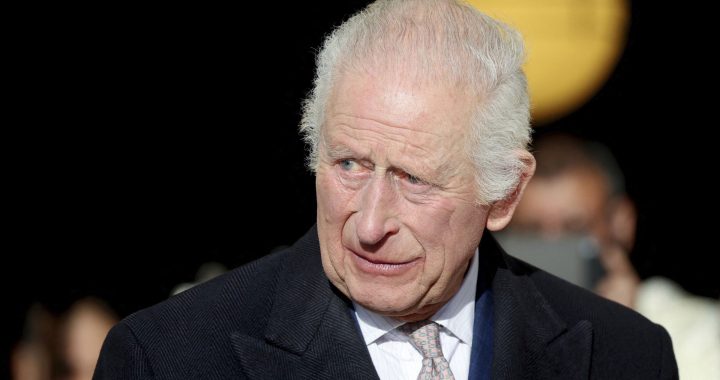APTN National News
As Canadians head to the polls Monday, there’s a push to make sure Indigenous voters are among them.
The Assembly of First Nations has identified 51 ridings where the First Nations, Metis or Inuit vote can make a difference.
The AFN highlighted on its website where the parties stand on Indigenous issues so people can cast their ballots accordingly.
2015 Election commitments for First Nations
Aboriginal leaders, lawyers, activists and academics say Canadians in all 338 ridings across the country should do the same.
Social media is peppered with complaints that key indigenous issues haven’t featured in mainstream media and debates.
Inequalities in healthcare, education, the economy.
The importance of social justice and treaty rights.
“We assume different types of knowledge because we’ve lived it,” said Cindy Blackstock, Executive Director of the First Nations Child and Family Caring Society. “And I think we have to be better communicators and better educators of non-Aboriginal people so they can understand why these situations have evolved. And then invite them into the solution.”
“You can’t build a country without your indigenous peoples,” said Todd Russell, an Inuit leader in Labrador. “When we’re weak, this country is weak. And when we’re strong, this country is strong.”
Here are the issues all Canadians should care about.
Healthcare:
“We need to call for equality being the floor not the ceiling.” Cindy Blackstock, First Nations Child & Family Caring Society
Healthcare is a basic right of all Canadians. Cindy Blackstock said it might come as a shock to the average person that Indigenous people do not have equal access to the same care.
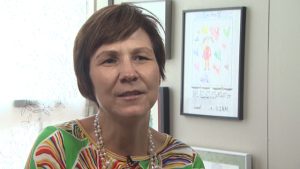
In a release this week, the Aboriginal Nurses Association of Canada wrote, “Quality health care is out of reach for many Aboriginal Canadians.”
A complicated “patchwork” of policies, legislation and agreements…cultural barriers according to the Association, have created barriers to equitable access to health care and services.
That’s reflected in sobering statistics when it comes to physical and mental health.
- Suicide rates are five to seven times higher for First Nations youth than for non-Aboriginal youth.
- Disproportionate rates of tuberculosis at 26.4 times the rate of Canadian-born non-Aboriginal people.
- Type 2 diabetes is now considered to have reached “epidemic” levels
“Many people I talk to have taken on government supported stereotypes that First Nations’ children on reserve are getting more,” said Blackstock. “And that’s why they couldn’t understand why things weren’t getting any better.”
Blackstock took the Canadian government before the Human Rights Tribunal over its discriminatory policies.
“The federal government has been under-funding these services in the order of 30 per cent for 148 years,” said Blackstock. “And that’s why we see all these inequalities for kids an then it makes sense for the average Canadian.”
A decision from the Tribunal is expected in the next few months.
In the meantime, Blackstock hasn’t heard the party leaders address key indigenous issues in this election. “I think the silence of the leaders is actually an endorsement of the continued racial discrimination,” she said.
Ontario Regional Chief Isadore Day is urging Canadian voters to “reject the current conservative policy approaches that perpetuate institutional racism.”
In the Chief of Ontario’s “Top 5 Priorities for First Nations,” the Indigenous healthcare crisis sits at number one.

“It is simply unacceptable that Indian Status is an indicator of health, poverty, and education in Canada,” said Day. “First Nations have worse health and educational outcomes, worse housing, and less access to critical services than any other population in Canada. This is entirely due to federal funding practices, policies and discriminatory legislation – some of which has been on the books since 1876.”
“These inequalities put a red hot poker stick into that Canadian identity,” said Blackstock.
Aside from the steep social cost, equality is good for the economy.
Blackstock points to research that shows a traumatic childhood, like living in poverty, in overcrowded houses, with mental health or addiction issues in the family, leads to costly healthcare problems for adults.
“It’s all predicted by what happened to you as a little kid, so the better we can make childhood, the more money we’re going to save downstream,” said Blackstock. “And that’s why the World Health Organization says for every dollar we spend on a kid, the taxpayers save seven dollars down the line.”
Economy:
“All Canadians benefit, when we are more prosperous.” Todd Russell, President of NunatuKavut
In Labrador, the Southern Inuit of NunatuKavut have been fighting for recognition of their Aboriginal identity and land claim for 25 years.
Russell wants to make it an election issue. A land claim brings in federal dollars to a region struggling economically. And that’s good for everyone in Labrador.

“We’re always judged by what we can do for those who have the least,” said Russell. And adds, as a country, Canadians shouldn’t accept poverty that defines so many Indigenous communities.
Number two on Ontario Regional Chief Isadore Day’s list of priorities: Continuing abject poverty that creates systemic issues in First Nations.
“On Election Day, voters should ask themselves if they are prepared to support another generation of discrimination, another generation of youth stuck in poverty, or another decade of lost opportunities,” said Day.
And the economies of First Nations matter.
In Cape Breton, the Mi’kmaw community of Membertou is an economic success.
With its hotel, business park and convention centre, it employs seven hundred people, many from off the reserve.
Not far away, Eskasoni is the largest Mi’kmaw reserve with a population of 4,000.
“General mainstream should care because we’re all part of the community,” said Tuma Young, an assistant professor at the Unama’ki College at Cape Breton University. “Eskasoni is such an economic force that impacts Sydney. People spend money off reserve. Cape Breton depends on what happens in Eskasoni.”
On a larger scale, First Nations are key to the larger Canadian economy, says a lawyer specializing in Aboriginal Title and Treaty Rights.
“The proposed pipelines that go west or south or east,” said Bruce McIvor, “those are indigenous issues. If non-indigenous people expect these to be resolved, to have major resource extraction projects move forward, we have to come to grips with indigenous issues across the country.”
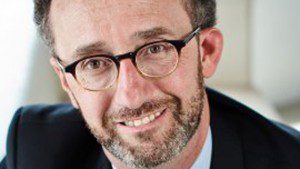
Environmental activist Clayton Thomas-Muller said the platforms of the main political parties “set Canada on a crash course with First Nations.”
“If our economic model continues on oil,” said Thomas-Muller, “that’s at odds with constitutional protection of indigenous rights to hunt and trap within our territories. Nobody is addressing the jurisdictional gray area that exist between title, sovereignty and rights of First Nation’s and where that sits between goals of extractive industry.”
Treaty Rights:
“We’re not going anywhere, this is our land. We’re here to stay.” Clayton Thomas-Muller, Environmental activist
The 338 electoral ridings across the country overlay a patchwork of Treaties that make up modern Canada.
“These are not historical, but instead are living documents,” said Bruce McIvor. “They need to be renewed. Respected. They need to be implemented and that takes work.”
For the Canadian public, treaty rights might only come to fore when there’s conflict; images of protests, burning tires, clashes with police on the evening news.

“But that’s the last resort for most First Nations,” he said. “That symbolizes how important these issues are and that they take these things seriously to step up in that way when confronted with force. Non-indigenous Canadians should take that as wake up call. One, these issues are fundamentally important to the country. And two, the government is not doing its job on these issues in a respectful, principled, honourable manner.”
In Elsipogtog, the fight over fracking brought the Mi’kmaq together with their Acadian neighbors and environmental groups. A coalition based on the common goal to protect the water.
That new expression of what it means to be Treaty partners pops up in similar scenes across the country, like the fight against Enbridge in British Colombia.
“What really binds them is locality,” said McIvor. “Hydroelectricity is a good example. The benefits flow south, the negative effects are experienced by the people close to the development. And a lot of non-indigenous groups are more aware now that in order to have a better chance of being successful in opposing a particular development, they’re better off supporting an indigenous group that has constitutional rights they can rely on.”
Thomas-Muller sees an awakening at a grassroots level that has yet to reach federal politics.
“There is a spirit of change that I see I these streets, especially with young Indigenous people who are leading social change,” said Thomas-Muller. “Forestry, pipelines, mining. We see this incredible Indigenous resurgence and it’s a real tragedy that the candidates haven’t addressed it, especially in the wake of Idle No More.”
He calls the lack of debate in this federal election on Treaty rights a “disservice to voters.”
Education:
“Kids are the best investment any society can make and we’re not investing in these children in fact we’re under investing.” Cindy Blackstock, First Nations Child & Family Caring Society
The Liberals have promised $2.6 billion over four years for First Nations education. The NDP promise $4.8 billion over 8 years.
Assistant Professor Tuma Young points out that money spread over 600-plus First Nations across Canada over several years, doesn’t add up to what’s needed.
Infrastructure. New schools. Resources for teachers. Culturally relevant curriculum.
“I don’t dismiss these promises, but generally speaking it’s the status quo or even less,” said Tuma Young. “We’ve been talking about education since the 1980s. I remember there was a protest train, students went to Ottawa to protest cuts to education then.”
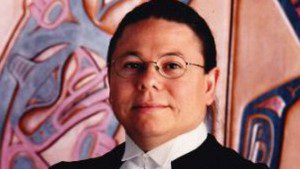
With an exploding young indigenous population, he said all of Canada benefits from an investment in education.
“Mainstream schools are closing in rural areas,” said Young. “Schools in First Nation Communities are busting at the seams and universities are starting to eye the First Nation schools as a tuition base.”
But the gap between Aboriginal and non-Aboriginal students is well documented. From grades to high school graduation rates to who goes to university.
“There needs to be someone in a leadership position that says, you know, we have got to step up to the plate, we’ve got to end this,” said Blackstock. “Maybe it means we’re going to go into a deficit for a couple of years. But these people have been in a deficit for 148 years and it’s the least we can do.”
Thomas-Muller says Canadians themselves need to be educated on the Indigenous reality against “racist stereotypes.”
“Canadian need to understand that there’s a well-funded campaign to label Indigenous people as anti-developemt, non-tax paying free loaders,” said Thomas-Muller.
Instead, he points out the incredible potential of indigenous youth.
“This is the fasted rising labour demographic in the country. This generation of young native people that are graduating is the most empowered, educated generation since colonization.”
Advocates say an investment now will pay off in the long run.
“I think our kids are worth the money,” said Blackstock. “And I think most Canadians would say that too.”
Social Justice:
“If we ensure our women are uplifted than everybody’s uplifted.” Beverley Jacobs, Former President, Native Women’s Association
Missing and murdered Indigenous women and the Truth and Reconciliation Commission report have captured headlines this year. And earned promises from the NDP, Liberals and Green Party.
A national inquiry into MMIW. Implementation of the TRC’s 94 recommendations.
But many want the platitudes backed up with policies: a plan to move forward.
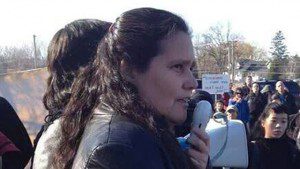
Last month, Mi’kmaw elder Albert Marshall went to see the Witness Blanket, a 12-metre long art installation that pieces together the tangible evidence of residential schools to tell the story of trauma and cultural loss.
“What I’m really hoping is this wonderful piece of art will somehow resonate in the eyes of the policymakers, like the politicians, the government,” said Marshall. “To take another step forward and not just use words, but put resources together for us to be able to begin this journey. This journey of reconciliation.”
Reconciliation requires partnership, says Beverley Jacobs, former President of the Native Women’s Association.
“My elders always taught me is that we’re always the one educating them,” said Jacobs. “So that’s part of our responsibility but now it’s up to them also. They have to become educated about who we are and about that mutual understanding and relationship.”
Jacobs, the lead researcher on the No More Stolen Sisters report over a decade ago, said Indigenous women have born “the brunt of colonial genocidal policies.” But she sees a growing awareness of issues around missing and murdered Indigenous women.
“These issues have root causes, rooted in Canada’s fabric,” said Thomas-Muller. “Addressing these things are all part of Canada’s identity. It creates a serious moral dilemma, we can’t say no, that’s a serious block to reconciliation.”
Jacobs hopes Canadian voters don’t put the Conservatives back in power.
She met Harper during her time as head of NWAC, when he offered up an apology over residential schools. Jacobs calls him “the most racist person I’ve ever met,” and doubts true reconciliation can happen under his leadership.
Social justice is a broad heading. And the issues are interwoven; education, poverty, racism, violence, over representation in prisons, high numbers of kids in care.
“We assume different types of knowledge because we’ve lived it,” said Blackstock. “And I think we have to be better communicators and better educators of non-Aboriginal people so they can understand why these situation have evolved. And then invite them into the solution.”
Blackstock would like to see every Member of Parliament elected on October 19th get a crash course on Indigenous issues so government can move forward with understanding.
In the meantime, who makes the trip to Ottawa is up to the Canadian public.
The hope is that Indigenous issues will matter when they cast their ballots.




